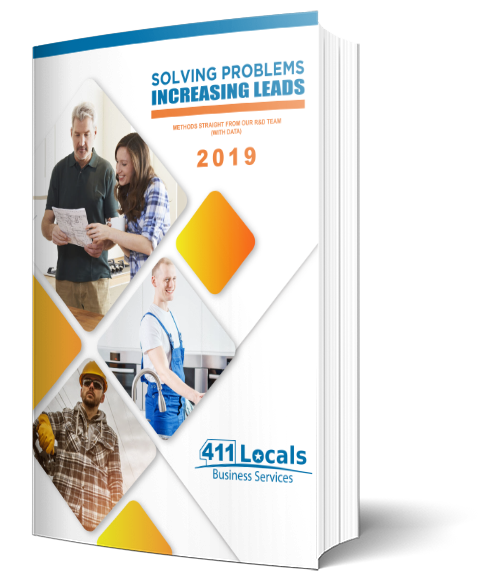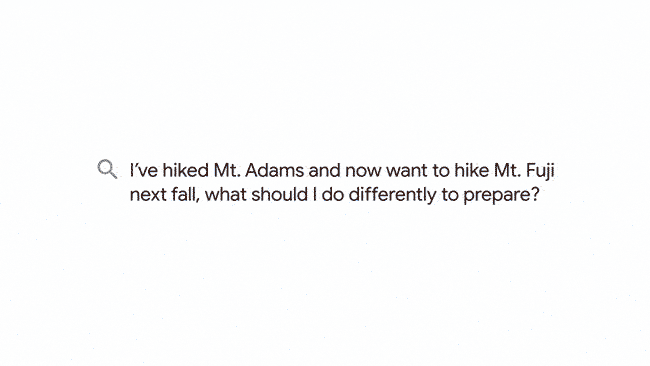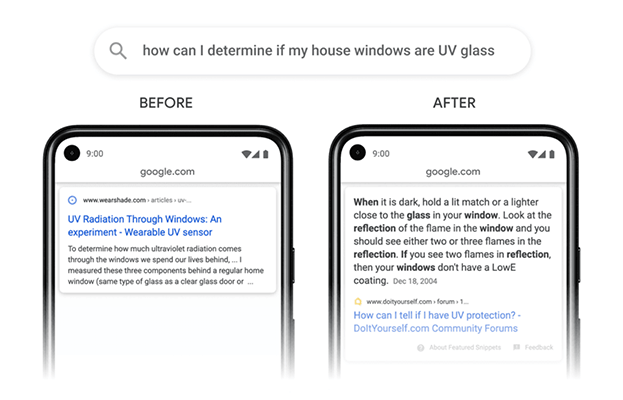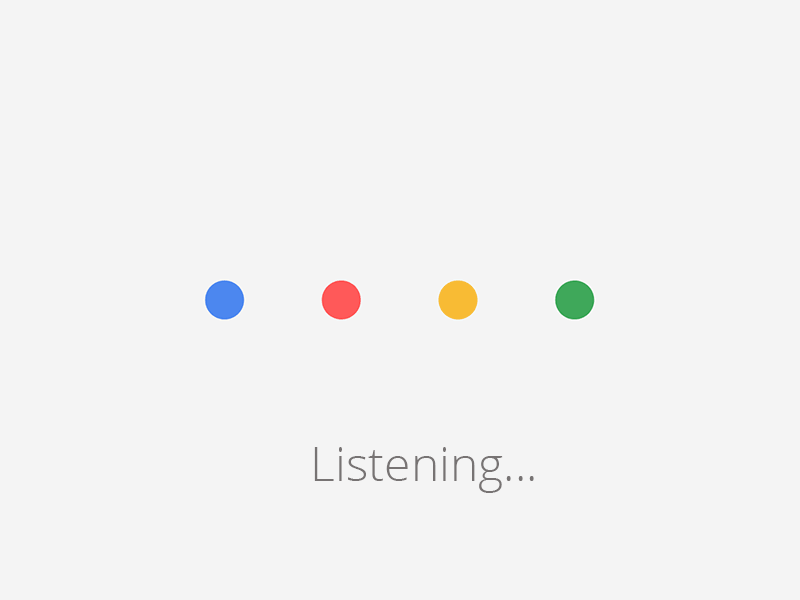SEO in 2022: Key Statistics and the Latest SEO Trends You Must Know
There is a universal truth about SEO that many businesses choose to ignore — resilience is key. Search engines like Google constantly make changes to their algorithms, and those who fail to adapt fall into oblivion. If you fail to adapt, your months-long efforts of getting your business website to rank in search results will be for nothing.
Understanding that SEO is a marathon and not a sprint is the main difference between those who succeed and those who don’t. 2021 was a year of changes for digital marketing and SEO, and 2022 promises to be no different. To help prepare you for the future, we will take a look at the key SEO statistics of 2021 and the latest SEO trends that will rule in 2022.
SEO Stats You Can’t Ignore In 2022
When it comes to getting your business found online, there is no better way to boost your chances than SEO (Search Engine Optimization). Since the creation of search engines like Bing and Google, investing in organic search has been a powerful strategy that helps brands and businesses get noticed by their target audience. While strategies have to constantly adapt to new industry changes, one thing remains solid — SEO continues to be the most essential aspect of driving organic traffic to your website and nailing your digital marketing success.
Recommended article

SEO vs. PPC: Which Is Better and Why
The SEO vs PPC debate has been around for a long time. To find the best solution for you, you need to understand the pros and cons of both…. Read More
Key SEO Stats

86.86%
Google currently has about 86.86% of the search engine market (Statista)
(Statista)

32%
The #1 result in Google gets approximately 32% of all clicks (Backlinko)
(Backlinko)

49%
49% of marketers report that organic search has the best ROI of any other marketing channel (Search Engine Journal)
(Search Engine Journal)

53%
53% of US consumers say that they research products using a search engine before deciding whether or not to buy (Google)
(Google)
Online Google Search Is On the Rise

81,000 searches per second in 2020, up from 63,000 searches in 2016
292 million searches per hour in 2020, up from 228 million searches in 2016
7 billion searches per day in 2020, up from 5.5 billion searches in 2016
2.55 trillion searches per year in 2020, up from 2.00 trillion searches in 2016
Voice Search Intensifies

55%
55% of American households will have at least one smart speaker by 2022
(TechCrunch)

27%
According to Google, 27% of the entire world population is voice searching on mobile devices.

Voice search results typically load in 4.6 seconds, which is 52% faster than the load time of the average page
(Backlinko)

Mobile voice searches are 3x more likely to be for something local than text searches
(Search Engine Watch)
The Growing Importance of Video

68.2%
68.2% of first page YouTube results are HD videos
(Backlinko)

157%
Posts with videos earn more backlinks and see a 157% boost in search traffic
(Search Engine People)

85%
In America, 85% of all internet users interact with video content every month – and 86% of consumers say they would like to see more video content from the brands they support!

Local SEO Matters More Than Ever

92%
92% of users only chose businesses that are on the first page of local search results.
(HubSpot)

900%
On mobile, queries like “near me,” “close buy,” and “where to buy” have seen 900% more growth in the past two years
(HubSpot)

46%
46% of all searches on Google are for a local business or local service
(Search Engine Roundtable)

86%
To find a local business, 86% of users rely on the internet
(WebFX)

92%
A Yelp page is present in the top 5 results for 92% of search queries that contain a city and business category
(Fresh Chalk)

76%
After searching on a smartphone for something nearby, 76% of people end up visiting the business within 1 day
(Google)

64%
Around 64% of small businesses have an online presence
(Sagapixel)

28%
28% of local searches result in a purchase
(Google)

86%
The Google Maps application is used by 86% of customers to find a local business.
(Safari Digital)
You Can’t Ignore Mobile Search Any Longer

58%
Mobile accounts for 58% of all Google searches
(Hitwise)

30%
30% of all mobile searches are location-related
(Google)

27.7%
The first organic listing on mobile receives 27.7% of clicks, versus 19.3% of clicks on desktop
(SEOClarity)

87%
87% of smartphone owners use a search engine daily
(Go-Globe)
Focus on Your Keywords

50% of search queries contain 4 or more words
(WordStream)
The first 5 organic results in the SERPs account for 67.6% of all clicks
(Zero Limit Web)
Roughly 8% of searches are phrased as a question
(Moz)
Over 29% of keywords with over 10K+ monthly searches consist of 3+ words
(Ahrefs)
Other

61%
Inbound leads, such as SEO, cost 61% less than outbound leads, such as direct mail or cold calling

14.6%
SEO leads have a 14.6% close rate compared to only 1.7% for outbound leads such as print advertisements

40%
40% of people abandon a website that takes 3 seconds or longer to load

70-80%
70-80% of people ignore paid search results, choosing to only click on organic listings

Google changes its search engine algorithm roughly 500 – 600 times per year
SEO Trends to Look Out for in 2022
Whether you are working with an SEO partner to boost your traffic or have decided to DIY it, your starting point should be understanding where online search is going in 2022. The best way to do that is by keeping track of the latest SEO trends. From algorithms to UX and Core Web Vitals, here are the most important SEO trends that you cannot ignore in 2022.
Core Algorithm Changes: Goodbye BERT, Hello MUM

Google updates are not to be feared. They are to be embraced. Back in 2019, Google launched its so-called BERT update (Bidirectional Encoder Representations from Transformers). The goal was for the search engine to improve its understanding of the intent behind users’ queries. This allowed Google to provide better service to voice assistants users.
Since the way people communicate is a lot more conversational these days, Google had to adapt its algorithm with the help of AI and NLP technologies. That is why BERT was “born.” But it was only the beginning, and we now have another new model known as MUM (Multitask United Model).
MUM is still in testing, but it is expected to roll out very soon. But, what is MUM exactly?
In simple terms, MUM is an AI model that aims to understand a user’s context, feelings, intent, and abstractions during an online search. MUM will do that by analyzing text, images, and videos from 75 languages to answer complex search queries. This means that users will be able to combine images, text, and voice queries to receive relevant answers to their questions. This revolutionary change in online search will require businesses to adapt their content strategy to boost their relevance within their niche. Simply put, you need to organize your content so it offers straight answers to questions (a.k.a. adopt an answer-centric approach to content).
Talking about SEO trends that will dominate in 2022, you can be sure that MUM will be at the center of it all.
Explore Passage Ranking: If You Can’t Rank an Entire Page, Rank an Excerpt!

Ranking an entire page in a niche with intense competition can be incredibly difficult. With the rise of zero-click searches and the increased number of featured snippets that Google uses to help users find immediate answers without even having to click on a page, it is close to impossible to rank a page.
And since Google doesn’t want to deal with the wrath of frustrated SEO practitioners, the search engine came up with an alternative solution. Late in 2020, Google announced its latest project — passage indexing.

Passage indexing’s goal is to rank a specific excerpt of a page instead of the whole page. In February 2021, passage ranking went live, and it presented a whole new world of opportunities for SEO practitioners.
In choosing which passages to rank, Google says its algorithm would look at page titles and headings, as well as other page signals. This means you need to make sure your content is always divided into separate sections and contains the necessary headings and subheadings, so it is easier for crawlers to scan the page and understand whether it is relevant to a particular query.
Voice Search: Introducing LaMDA and What That Means for SEO in 2022

Even if you yourself aren’t using voice search yet, the majority of Americans will soon be doing so. Google has started adapting its algorithm to accommodate the growing number of people who use voice assistants in their everyday life, and its latest update will be the so-called LaMDA (Language Model for Dialogue Applications).
The purpose of LaMDA is to produce a model that can read many words, “pay attention to how those words relate to one another,” and try to predict which words might come next. While MUM is all about understanding search intent and users’ emotions, LaMDA wants to have a conversation and offer results that are based on what users feed it.
Suggested Clips: Leverage Video to Boost Traffic

In 2022, one thing is for certain — video marketing will continue to be a major factor in getting traffic and boosting engagement. It is safe to say that video marketing will always be one of the most current SEO trends. Google agrees. Earlier in 2021, the search engine announced it would launch two new video structured data types that can help your videos stand out in searches — Clip Markup and Seek Markup.
The new structured data will allow you to outline key moments from your videos that crawlers can then use for Suggested Clips.
Back in 2019, Google launched key moments, and it started showing excerpts of videos with titles and timestamps. That process was automatically connected to YouTube videos, but the new structured data lets you manually define the labels and timestamps of your videos. You can check how to set up Click Markup and Seek Markup.
UX Takes on a Whole New Meaning (Understanding Core Web Vitals Is Key)

UX stands for User Experience, and it refers to the focus of building your website, so it is as easy and intuitive for users to navigate through as possible. What this means for you is that simply optimizing your web pages for keywords and building links is far from enough to rank in 2022. While keywords and link building are immensely important in SEO, they are not the only thing that matter anymore.
Now, one of the latest SEO trends is all about page experience, which Google defines as the set of signals that measure how users perceive their experience of interacting with a web page beyond its basic information value.
Back in May 2020, Google announced its plans to roll out a series of algorithm changes to prompt webmasters to improve their page experience. The new update promised to take a set of metrics into consideration when evaluating the relevance and performance of a page. These metrics were called Core Web Vitals.

Core Web Vitals are divided into three main metrics:
- Largest Contentful Paint (LCP) — it measures the page speed and loading performance of a page. The best practice, according to Google, is to keep your LCP under 2.5 seconds after a page starts to load.
- First Input Delay (FID) — it measures the interactivity of a page. FID should be less than 100 milliseconds, says Google.
- Cumulative Layout Shift (CLS) — it measures visual stability. Google recommends that your CLS score should be less than 0.1.
In addition to Core Web Vitals, Google also considers factors such as the mobile-friendliness of a page, the use of the HTTPS protocol, and any intrusive interstitials when measuring the UX of a web page.
While it is not a strictly new trend, improving the UX of your website seems to be of growing importance going forward in 2022 and beyond.
Shopping Graph: Google’s Way of Telling Merchants Online Shopping Is Booming

When the COVID-19 pandemic made physical shopping impossible, shoppers turned to the internet to buy whatever they needed. As a result, platforms like Amazon and Shopify thrived. Google picked up on that and decided it was time to refine its own search engine to better accommodate the needs of shoppers.
That is how the Shopping Graph came into existence. The AI-based model (made in partnership with Shopify) aims to display relevant product data and make it as easy as possible for consumers to find the right item and platform with a single click. It “works in real-time so people can discover and shop for products that are available right now,” according to Bill Ready, the president of Commerce and Payments at the Shopping Graph.
The Shopping Graph comes with a promising set of features — Open Cart Tabs, Linked Loyalty Programs, Great Deals, Relevant Retail Deals, Affordable Picks Carousel, to name a few.
AI Has Never Mattered More

In addition to the latest SEO trends of MUM, LaMDA, and the Shopping Graph, Google also promises a range of upcoming improvements to its algorithm to help people better evaluate the credibility of the information they find online.
A recent post on the official Google blog showed the redesigned search page and discussed the growing importance of AI and how it helps tailor relevant information to the user. What does that mean for you and your business? The best you can do in addition to following the SEO best practices recommended by Google, you need to make sure your content offers quality answers to the questions your target audience might have. Not every content matters. The right one does.
SEO Trends in 2022: The Recap
Drawing from what Google has already confirmed and where online search is headed, going into 2022, it is easy to see that search engines are trying to offer the most accurate results to a wider set of queries. Combining text, speech, and video, online search is becoming a more inclusive process that aims to offer the most relevant answers with a single query.
Businesses will have to work on improving their mobile-friendliness, UX performance, page speed, and, above all, content (text, audio, and video). Understanding that SEO is not a one-time effort, but a continuous process is what separates success from failure.
If you want to partner with an experienced SEO service provider, 411 Locals would be more than happy to work with you and your business. Reach out to us, and we will readily answer all your questions!
Stay tuned for our next topic!
Subscribe
By signing up to our newsletter you will not only be getting a ton of useful tips and free resources for your business, but you will also have exclusive access to our weekly promotions.


